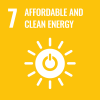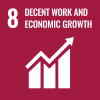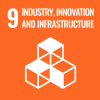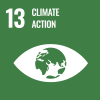
CRITICAL ENERGY TRANSITION MINERALS PRESENT A SIGNIFICANT OPPORTUNITY FOR SUSTAINABLE DEVELOPMENT
The rapid adoption of renewable energy technologies and the transition away from fossil fuels are vital for combating climate change. Achieving net-zero carbon dioxide (CO2) emissions by 2050 will require much faster deployment of clean energy technologies, including wind turbines, solar panels, electric vehicles (EVs) and battery storage systems. This shift is fueling a sharp rise in demand for critical energy transition minerals such as copper, cobalt, lithium, nickel, and rare earth elements, particularly as developing countries work to achieve universal energy access and diversify their economies. For instance, an onshore wind power plant requires nine times more mineral inputs than a gas-fired plant of the same capacity, while an EV needs six times more minerals than a conventional car (figure 1). Additionally, the average mineral requirement for new power generation capacity increased by 50 per cent during the 2010s, driven by the growing share of renewables in total capacity additions.
The choice of clean technologies will heavily influence the demand for specific critical energy transition minerals in the coming years. While some minerals like cobalt and lithium are essential for batteries, others, such as aluminium and copper, are used across diverse applications. As countries intensify their energy transition efforts, demand patterns for critical minerals will shift significantly. However, projections indicate a sustained supply shortage of critical minerals after 2030, posing a major challenge to the energy transition (International Energy Agency, 2024). Meanwhile, recent price volatility is dampening investment in key minerals like cobalt, nickel and lithium.
Against this backdrop, countries rich in critical mineral resources have an opportunity to unlock significant development benefits. These minerals can attract foreign and domestic investment, create jobs, and boost fiscal revenues, exports, and overall economic growth. However, quantifying the economic scale of the mining industry remains challenging, especially due to the volatility of mineral prices, which directly impact valuations.
Despite this challenge, mining is a key growth engine for many developing economies. In 24 developing economies, it accounts for at least 40 per cent of total exports—and over 80 per cent in some cases. In at least seven African economies with available data, mining contributes more than 25 per cent of fiscal revenues. Looking ahead, the potential for critical minerals extends beyond traditional mining-dependent economies to those with substantial yet underutilized reserves. Countries like Brazil (rare earth elements, nickel), Viet Nam (bauxite, rare earth elements), and the United Republic of Tanzania (graphite) hold vast reserves of critical minerals but currently account for only a small fraction of global production (figure 2). By leveraging these untapped resources, these countries could strengthen their role in the global supply chain while driving economic growth and diversification. As countries seek to expand their participation in the critical minerals sector, they must navigate risks that could undermine or even outweigh short– and medium-term benefits. Many of these risks stem from the “resource curse”, where resource-rich countries may experience poorer development outcomes than those with fewer resources. Potential consequences include overreliance on mining, lack of economic diversification, low productivity, slower economic growth, widening inequalities, environmental degradation, and a higher risk of conflict.
To ensure that critical minerals contribute to sustainable development while minimizing environmental and social harms, countries must adopt effective national policies and build strong institutions. This effort should be supported by multilateral frameworks that promote equitable resource management, environmental sustainability, and inclusive economic growth.
COUNTRIES MUST ADOPT STRONG AND EFFECTIVE NATIONAL POLICIES
Implementing macroeconomic policies to maximize SDG gains
Developing countries need a comprehensive and integrated approach to manage their critical minerals resources, combining fiscal and monetary measures to promote stability, manage volatility, and ensure the equitable distribution of benefits. Robust tax systems are essential to capture public revenues effectively. To manage revenue fluctuations and secure long-term benefits, countries can implement fiscal rules and create stabilization funds to save surplus revenues generated during boom periods. These tools help support countercyclical policies and promote intergenerational equity by preserving wealth for future generations. Monetary policy also plays an important role in preventing the resource curse. Central banks must strike a balance between controlling inflation, maintaining competitive exchange rates, and fostering monetary conditions that support sustainable economic growth. Achieving effective macroeconomic management in resource-rich economies requires close coordination between fiscal and monetary policies.
Ensuring inclusive governance for sustainable development
Good governance is critical for transforming the development of critical mineral resources into progress on the Sustainable Development Goals (SDGs). Increasingly, resource-rich economies are adopting environmental, social, and governance (ESG) standards and integrating due diligence requirements into regulatory frameworks to promote sustainable and responsible mining practices. Key measures such as mandatory transparency in licensing, contracts, and revenue reporting, alongside the establishment of anti-corruption agencies and independent monitoring bodies, are essential for tackling corruption and curbing illicit financial flows from the critical minerals sector.
Local community engagement and social responsibility are equally important to ensure that mining projects contribute meaningfully to sustainable development. Policies must mandate free, prior, and informed consent of Indigenous Peoples, pursuant to the United Nations Declaration on the Rights of Indigenous Peoples, by integrating this requirement into decision-making processes. As noted in the Report of the Secretary- General’s Panel on Critical Energy Transition Minerals, all actors must uphold the rights of Indigenous Peoples, on whose lands much of the global reserves of critical energy transition minerals are located (United Nations, 2024). Benefit-sharing arrangements can further enhance local development by fostering infrastructure improvements and job creation, building trust between mining companies and communities. Moreover, governments must enforce strong protections for people and the environment by upholding human rights, implementing adequate labor standards, and adopting stringent policies to prevent the overexploitation of natural resources and biodiversity loss.
Developing industrial policies to enhance the benefits of critical minerals
Resource-rich developing economies must enhance access to key technologies across all phases of mining—exploration, processing, refining and recycling—by attracting multinational firms with advanced expertise and capabilities, while promoting technology transfer to domestic firms. Strengthening local innovation ecosystems enables domestic firms to adapt these technologies to local contexts and develop their own capabilities. However, these efforts cannot succeed in isolation. As these technologies are critical to advancing renewables and achieving net-zero goals, international cooperation is necessary to ensure access to technology on affordable terms.
Strategic industrial policies are crucial for improving access to key technologies and fostering their development to support the growth of the critical minerals sector. Such policies can attract foreign investments, facilitate technology transfers, drive innovation, and build local technological capacity. In countries like Australia and Canada, innovation policies have successfully fostered diversification and strengthened local capabilities in the mining industry (Daly and others, 2022; Anzolin and Pietrobelli, 2021). Chile’s experience with copper highlights the limitations of relying almost exclusively on market forces to advance downstream activities and promote forward and backward linkages. Despite being a leading copper producer, Chile has struggled to move beyond extraction into higher-value activities.
Policymakers have a range of industrial and innovation policy tools at their disposal, including tax incentives, subsidies, export restrictions, local content requirements, supplier development programmes, research and development (R&D) support, public-private partnerships, and initiatives for labour market and skills development. A key challenge for countries is determining the most effective diversification strategy. Opportunities for upstream diversification may arise through backward linkages in the mining equipment, technology, and services sectors. Midstream opportunities could focus on smelting, refining, and producing intermediate products, while some countries may pursue downstream activities such as manufacturing components for renewable energy, electronics, high-tech industries, or electric vehicles. These strategies may involve upgrading products and processes within the same stage of the value chain, moving to higher value-added activities within the chain (intra-chain upgrading), or transitioning to a different value chain entirely (inter-chain upgrading). For example, figure 3 illustrates the total export value for the lithium-ion battery value chain in 2022 (interchain upgrading).
Tailoring policy approaches: no one-size-fits-all
Developing economies with critical mineral reserves face the challenge of designing and implementing coherent industrial and innovation policies. Decades of policy experimentation, with both successes and setbacks, have highlighted several conditions necessary—but not sufficient—for fostering diversification, structural transformation, and economic growth. These conditions are equally relevant for policy frameworks targeting critical minerals.
First, effective industrial and innovation policy packages require political and macroeconomic stability, sustained political commitment, and adequate long-term financing. Stability is vital for attracting investment in critical minerals, making it essential to align short political cycles with the longer timelines needed to implement industrial and innovation policies. Second, policy coherence is critical, as the impact of individual measures often depends on their interaction with others (Andreoni, 2024). Third, the effectiveness of policies can be enhanced through targeted incentives and conditionalities, applied either as eligibility criteria (ex-ante) or performance standards (ex-post).
In addition to these general conditions, domestic and international factors shape both the diversification strategies available to countries and the design of their policies. This highlights the need for tailored approaches—there is no one-size-fits-all solution. Each country must craft its policy mix based on its unique circumstances, institutional capacity, and economic and geopolitical priorities. Industrial and innovation policies should be integrated into a comprehensive national strategy that balances economic, environmental, and social objectives.
Many developing economies already play key roles in critical mineral production, such as Chile (copper), the Democratic Republic of the Congo (cobalt, tantalum), and Indonesia (nickel). Proximity to major consumer markets or automotive hubs can enhance competitiveness by lowering transportation costs, while the availability of essential infrastructure—transport, energy, water, and digital networks—provides a significant logistical advantage. For least developed countries, basic infrastructure is a crucial first step in leveraging critical minerals. For those expanding into processing, reliable and sufficient energy is particularly important. Likewise, strong technological capabilities and a skilled workforce are vital for countries prioritizing downstream activities.
Internationally, green policies in major developed economies, along with evolving trade, investment, and cooperation agreements, create a complex policy environment. Developing economies must secure market access, attract capital and technology, and retain policy flexibility. However, asymmetric negotiating power often complicates these goals, and new agreements may not always align with their development needs.
Free trade agreements (FTAs) between developed and developing economies often reflect this imbalance. For instance, in FTAs between the European Union and developing countries, binding provisions typically ensure access to raw materials, while commitments on sustainability and industrial policy are less enforceable. A notable exception is the Advanced Framework Agreement between the European Union and Chile, which preserves Chile’s industrial policy space. It exempts Chile from dual pricing prohibitions, allowing lithium to be sold at preferential prices to domestic companies for refining, thereby supporting local value addition. However, preliminary analyses suggest these conditions may be too restrictive and could even limit future policy flexibility (van der Ven, Sasmal, and Torres, 2023).
Balancing ambition with pragmatism
Developing countries can leverage their resource endowments and strategic advantages, such as critical mineral reserves, geographic location, or technological capabilities, to negotiate with governments and leading mining firms. This leverage is crucial for the success of their industrial policies. For example, Indonesia’s nickel export ban succeeded due to the scale of its reserves, whereas its bauxite export ban failed. However, large reserves alone are not enough. Despite accounting for over 60 per cent of global cobalt ore extraction, the Democratic Republic of the Congo has struggled to capitalize on its resources due to political instability, weak governance, and inadequate infrastructure.
Institutional capacity is also critical. Strong institutions are necessary to integrate and coordinate policy measures effectively, while preventing corruption and political capture ensures credibility and success. This is particularly important for implementing local content policies, widely used in the mining sectors of Botswana, Ghana, South Africa, and Zambia. However, the success of these policies in fostering downstream activities depends on complementary measures to build domestic supplier capabilities (Anzolin and Pietrobelli, 2021). Without such support, overly broad or ambitious quotas can render these policies ineffective or counterproductive.
Strategic leverage and robust institutions can unlock significant opportunities for countries with substantial reserves. Well-designed industrial and innovation policies can further encourage processing and refining activities in resourcerich economies. In cases where both leverage and institutional capacity are strong, countries can adopt ambitious policies to expand into downstream activities, particularly in medium – and high-tech industries. Morocco, for instance, is well-positioned to enter the solar panel manufacturing value chain, thanks to its abundant mineral resources, technological expertise, and strong regulatory frameworks.
Leveraging financing instruments
Bridging the projected investment gaps in critical minerals requires a comprehensive industrial policy that ensures regulatory stability, improves infrastructure, and enhances transparency and governance. Governments must also offer targeted incentives to attract domestic and foreign capital while leveraging innovative private financing tools to mobilize resources for mining projects. For resource-rich economies, creating an attractive investment climate is essential—not only to support mining and processing activities but also to acquire technologies that improve efficiency, reduce environmental impact, and enable new methods of extraction and refinement.
Fiscal incentives, such as income tax holidays, accelerated depreciation, investment allowances, tax credits, and reduced royalties, are commonly used to attract investment. Tax stabilization and income tax incentives are particularly prevalent in mining contracts (IGF, 2019), especially in high-risk environments or during economic downturns like the 2014–2016 commodity price crash. However, cost-based incentives (e.g., investment allowances, tax credits) are generally more targeted and easier to monitor than profit-based incentives (e.g., tax holidays), which remain less common.
The effectiveness of tax incentives in advancing critical minerals development is debated. Poorly targeted incentives may fail in environments with political instability, inadequate infrastructure, or high business costs. Overly generous fiscal incentives can reduce government revenues, encourage profit-shifting, and limit domestic resource mobilization. For example, sub-Saharan Africa loses an estimated $470–$730 million annually in corporate income tax due to tax avoidance by mining multinationals (Albertin et al., 2021). Additionally, excessive incentives can erode public trust in mining companies and resource governance. Addressing these issues requires stronger global cooperation to curb aggressive tax avoidance and illicit financial flows.
Beyond tax measures, governments can offer financial incentives such as grants, subsidies, preferential loans and loan guarantees to lower financing costs and attract private capital. Loan guarantees, for instance, reduce investor risk by signaling government commitment, making them useful for projects struggling to secure commercial funding. However, guarantees can be costly and, if projects fail, may burden the State. They also risk creating moral hazard by encouraging risky investments with expectations of government bailouts.
INTERNATIONAL COOPERATION IS KEY TO SUSTAINABLE CRITICAL MINERALS DEVELOPMENT
Global cooperation is essential for harnessing the potential of critical minerals to drive the energy transition and sustainable development. International collaboration is needed to expand supply, stabilize supply chains, facilitate technology transfer, and attract investment. However, the rise of unilateral policies, trade restrictions, and protectionist measures threatens to fragment global critical mineral markets.
In recent years, unilateral trade-restrictive measures in the critical minerals sector, affecting both raw and processed materials, have surged (figure 4). Developed economies, particularly the European Union and the United States, account for most of these measures, many of which negatively impact developing countries. Such restrictions can deepen global inequalities by limiting opportunities for developing countries to move up the value chain, while also increasing costs for industries and consumers, slowing the adoption of clean technologies. This growing fragmentation risks significant global economic and efficiency losses.
To address these challenges, a balanced approach is needed—one that aligns national priorities with collaborative frameworks and shared objectives. Mechanisms must be established to ensure equitable access to critical minerals, promote technology sharing, and fairly distribute benefits across stakeholders. New collaborative frameworks are essential for ensuring an equitable global supply of critical minerals. The United Nations Secretary-General’s Panel on Critical Energy Transition Minerals has outlined seven guiding principles and five actionable recommendations to pursue the energy transition with equity, justice, and sustainability at its core (United Nations, 2024). Strengthened multilateral trade cooperation under the World Trade Organization (WTO) and similar frameworks is also critical. Enhanced international collaboration can help combat illicit financial flows, improve market transparency, stabilize raw material prices, foster a predictable investment environment, and unlock greater private sector financing opportunities. These issues will be central to discussions at the Fourth International Conference on Financing for Development, where policymakers, industry leaders, and multilateral organizations will seek to shape a fair and sustainable approach to critical minerals governance.
Supporting developing economies through global cooperation is vital, focusing on technology transfer, skills development, and institutional capacity-building. Different groups of developing countries face distinct challenges: middle-income countries need to prioritize advancing technological capabilities, fostering innovation, and strengthening downstream activities, while low-income countries must tackle structural barriers such as weak governance, limited infrastructure, and insufficient human capital. Strengthening institutional capacity in low-income countries requires transparent governance frameworks and the development of basic public sector capabilities.
The mining industry is also under growing pressure to adopt robust sustainability standards. While the proliferation of environmental, social, and governance (ESG) frameworks reflects increased awareness and demand for transparency, their complexity poses significant challenges. Small mining firms in developing countries often lack the resources to comply, reinforcing inequalities as larger corporations dominate international supply chains.
Addressing these issues requires harmonizing and aligning sustainability standards to simplify reporting and improve comparability. Emerging initiatives aim to create unified frameworks by involving diverse stakeholders. However, practical support mechanisms and adaptable frameworks are needed to help smaller mining operations meet requirements. Partnerships between governments, non-governmental organizations, and the private sector can play a crucial role in promoting socially and environmentally sustainable practices, ensuring inclusive participation in global critical minerals markets. These discussions will feature at the Second World Summit for Social Development, where global leaders will explore strategies for fostering equitable and sustainable development.
 Welcome to the United Nations
Welcome to the United Nations



